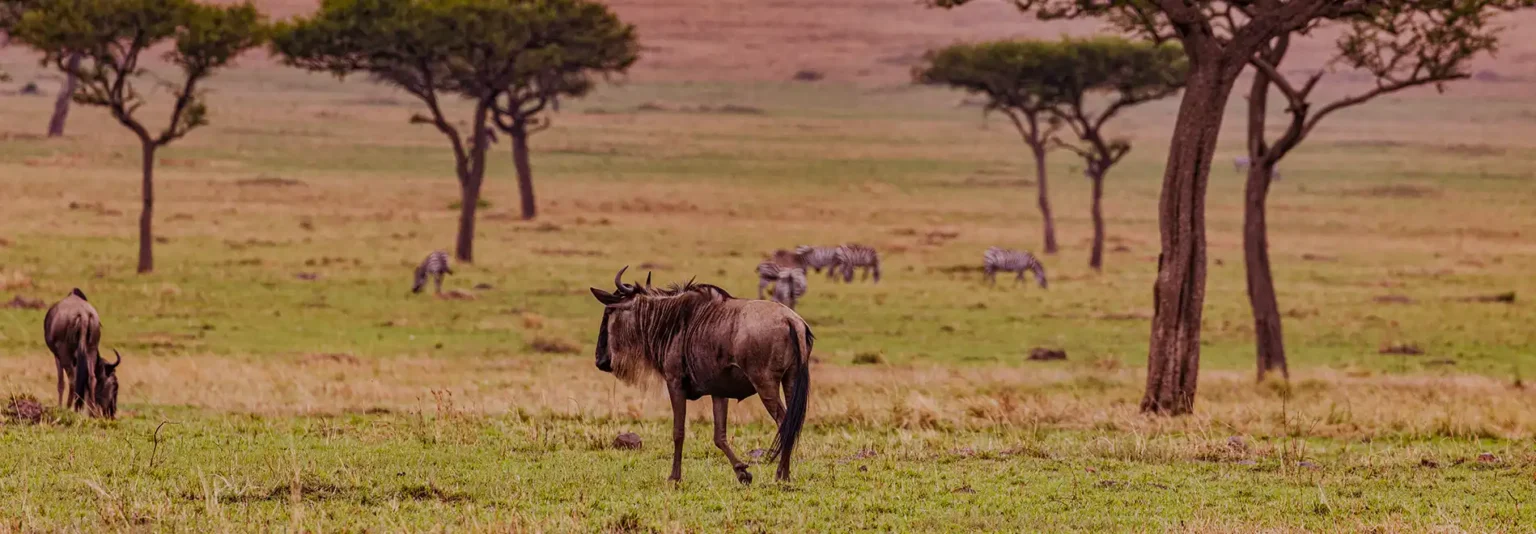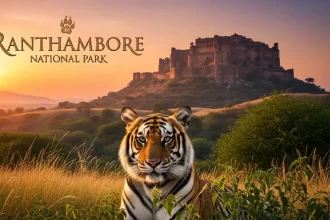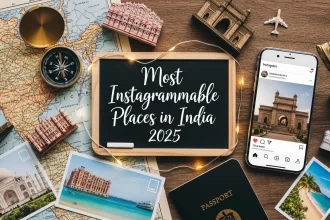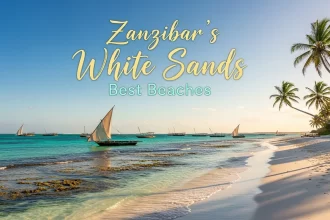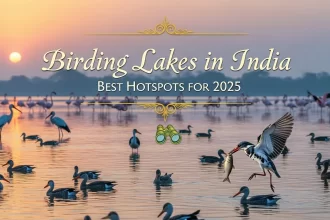Discover the most famous safari destinations in Africa – from the great elephants at Amboseli to the Great Migration in the Maasai Mara. Detailed information is available regarding wildlife experience, accommodation, and special activities at each location that will help in planning an unforgettable adventure in the very heart of Africa’s breathtaking landscapes.
Top Africa Safari Destinations: An Adventure
A safari is the ultimate in adventure travel. It is an experience which literally lures in everyone who loves nature, celebrities, royals, and honeymoons. With so many places offering varied landscapes and animal encounters, it may be hard to find just the right one. To assist you in preparing for your safari dream, we have combined deep information on some of Africa’s most popular safari destinations, pointing out what might be their special attractions, encounters with wildlife, accompaniment options, activities, and information to maximize your trip.
1. Amboseli National Park, Kenya
Overview
It covers roughly 39,206 hectares or 392 km² in Loitoktok District of Kenya’s Rift Valley Province, with incredible views of Mount Kilimanjaro, the tallest peak in Africa. Wildlife experiences in this park range from open plains and wetlands to much denser woodlands, which creates a vibrant habitat for an abundance of wildlife, making it one of the most sought-after safari destinations.
Wildlife Experience
Amboseli is known for large herds of elephants, often seen elegantly moving in the background of Kilimanjaro. Over 100 species of mammals inhabit the park and include:
- Elephants: The park is renowned for large, tusked elephants, hence one of the best areas to see elephants.
- Lions and cheetahs are more easily spotted, even more so in the morning and late afternoons.
- Giraffes and Zebras: These African animals often roam the open plains, grazing.
- Birds: There are over 400 bird species within the park; flamingos, herons and the impressive lilac-breasted roller represent but a few examples.
The dry season, from June to October, is best time for visitation; since there will be a concentration of wildlife around limited water sources, which makes the probabilities of observation much higher.
2. Chobe National Park, Botswana
Description
Chobe National Park is one of the beautiful African parks, covering approximately 11,700 square kilometers and situated in northern Botswana. It contains varied habitats such as floodplains, swamps, and woodlands. The River Chobe is essential for attracting most of the game, and the sunset on the water is just spectacular.
Wildlife Experience
Chobe is renowned to hold large concentrations of elephants, as more than 120,000 elephants are said to live in the park. The riverside region, in particular Chobe Riverfront, offers a high concentration of game and is an excellent setting for viewing:
- Elephants: Very often drinking and bathing in the river.
- Hippos and Crocodiles: Often seen in the water, particularly during a boat safari.
- Antelope Species: Counting kudu, impala, and waterbuck, which often gather at the riverbanks.
- Birdlife: Chobe is a birdwatcher’s paradise with more than 450 species, including the African fish eagle and the lilac-breasted roller.
Stay
There are some great selections of lodges ranging from luxurious lodges to rudimentary tented camps:
- Luxury Lodges: Chobe Game Lodge has very comfortable rooms with views of the river from a gourmet dining view.
- Tented Camps: Chobe Under Canvas there are tented camps provided in order to have an intimate setting, focusing on the immersion of wildlife.
- Budget Options: Countable numbers of lodges and camps that prefer budget travelers will provide basic amenities and guided safari experience.
Safari Activities
- Boat Safaris: Witness wildlife from a different angle by swimming along with the elephants or spotting the numerous species that nest along the shores. This safari gives one an opportunity to behold the other scopes of the wildlife and surrounding landscapes.
- Game Drives: Roam through the game park by traditional land-based safaris, where the guides will be able to detail you through about the local fauna and flora.
- Walking Safaris: For the adventurous, guided walking safaris work best to help the tourists connect even more with nature.
Visit Chobe
- Best Time to Visit: Best time for wild game sighting with water as supplement through the dry season from May to October. The wet season, November to April, offers the visitor a chance to see lush landscapes as well as get some migratory birds.
- What to Pack: Daylight outfits can be used for the day. In the evenings, layers of warmth can be added, along with binoculars and a camera. Waterproof equipment may prove useful, as one visits in the wet season.
- Health Precautions: See your doctor before traveling, regarding vaccinations and malaria prophylaxis.
3. Kruger National Park, South Africa
Overview
Kruger National Park is one of South Africa’s largest game reserves and one of the world’s most famous wildlife reserves. With an area of nearly 2 million hectares (about 20,000 square kilometers), Kruger borders Mozambique for 352 kilometers. Kruger boasts exceptional biodiversity with thousands of species.
Wildlife Experience
Kruger is a classic “Big Five” destination, that is, attractions include:
- Lions and Leopards: Both of these are often spotted on both day and night safaris.
- Elephants and Buffalo: They are very often spotted throughout the park.
- Rhinoceros: Black and white species both are found there, and there is active conservation work going on to save the species.
- Bird Species: 500+ species of birds are found in this park, thus it should be heaven for the bird photographers.
There is a lot of variety of different ecosystems in the park – from the savanna to the riverine forest; this rich biodiversity delivers a thrilling wildlife viewing experience.
Accommodation
Kruger National Park provides a variety of accommodations:
- Luxury Lodges: Top end lodges such as Singita and Lion Sands are high-class accommodations, personal service, and exclusive safari tours.
- Rest Camps: Kruger’s government-run rest camps have comfy lodging and all the amenities one needs, appealing to every budget.
- Campsites: For a budget-price choice, there are many campsites which would allow for a more primitive experience and even basic amenities.
Activities
- Self-Drive Safaris: With an open schedule, one is free to drive around the park but stop over anytime they spot game or of interest. Self-drive safaris allow for flexibility in one’s schedule.
- Guided Game Drives: Guided safaris with professional guides for deep knowledge about the flora and fauna of the park.
- Night Drives: The park is visited at night when the nocturnal animals become active, giving a different view of the wildlife.
Visiting Kruger
- Best Time to Visit: The dry season from May to September when the savannah landscape is vivid with the animals having congregated around water sources for survival.
- What to Carry: Sun protection, insect repellents, binoculars, and a good camera. The dress code remains in neutral color so as to blend into the environment.
- Health Precautions: You should be sure all of your vaccinations are current; if you’re traveling to certain parts of Africa, malaria prevention may be necessary as well.
4. Maasai Mara, Kenya
Overview
One of the most visited safari destinations in Kenya, the Maasai Mara National Reserve is an incredibly stunning destination with spectacular wildlife and landscapes. Roughly 1,510 square kilometers in area, the reserve forms part of the much greater Serengeti and is famous throughout the world for the Great Migration.
Wildlife Experience
The Maasai Mara is known for providing spectacular wildlife views, mostly during the wildebeests’ Great Migration, which happens between July and October. There are millions of wildebeests and zebras – and other herbivorous animals-migrating from one plain to another in search of a greener pasture during that period. Other notable sightings that one would notice when on a tour of the reserve include;
- Big Cats: This reserve boasts a high concentration of lions, leopards, and cheetahs. It’s a pretty good bet for anyone interested in spotting some of the big cats.
- Elephants and Giraffes: Usually grazing in open savanna.
- Birdlife: The reserve hosts over 500 species of birds, and harbour sightings of the secretary bird and the African fish eagle.
Accommodation
There are different types of accommodation available for visitors to the Maasai Mara:
- Luxury Lodges: Properties like Mara Serena Safari Lodge provide high-end luxury, with breathtaking views and service at its finest level.
- Tented Camps: Options including Kicheche Bush Camp offer intimate tented accommodation that really adds to the wilderness experience.
- Budget Camps: There is still a variety of options available for those on a tight budget.

